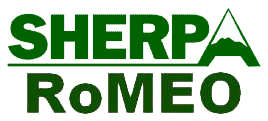Activity based & behavioural occupancy modelling for EE building design
Contenido principal del artículo
Resumen
Detalles
Detalles del artículo
Derechos de autor
Las obras que se publican en esta revista están sujetas a los siguientes términos: 1. La Universidad de Navarra (el Servicio de Publicaciones como su editorial) conserva los derechos patrimoniales (copyright) de las obras publicadas, y favorece y permite la reutilización de las mismas bajo la licencia de uso indicada en el punto 2. © Servicio de Publicaciones, Universidad de Navarra, 2015 2. Las obras se publican en la edición electrónica de la revista bajo una licencia Creative Commons Reconocimiento-NoComercial-SinObraDerivada 4.0 (texto legal). Se pueden copiar, usar, difundir, transmitir y exponer públicamente, siempre que: i) se cite la autoría y la fuente original de su publicación (revista, editorial y URL de la obra); ii) no se usen para fines comerciales; iii) se mencione la existencia y especificaciones de esta licencia de uso.  3. Condiciones de auto-archivo. Se permite y se anima a los autores a difundir electrónicamente la versión post-print (versión evaluada y aceptada para su publicación: del autor o de la editorial) de sus obras antes de su publicación, ya que favorece su circulación y difusión más temprana y con ello un posible aumento en su citación y alcance entre la comunidad académica. Color RoMEO: azul.
3. Condiciones de auto-archivo. Se permite y se anima a los autores a difundir electrónicamente la versión post-print (versión evaluada y aceptada para su publicación: del autor o de la editorial) de sus obras antes de su publicación, ya que favorece su circulación y difusión más temprana y con ello un posible aumento en su citación y alcance entre la comunidad académica. Color RoMEO: azul. 
